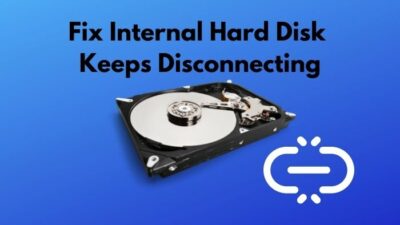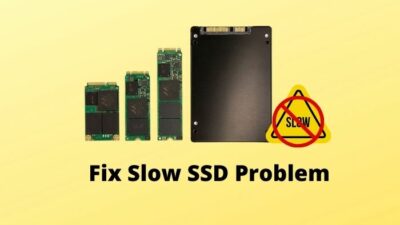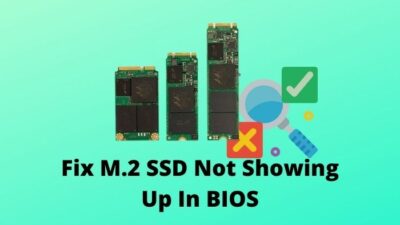If you have just upgraded your primary memory to SSD, then it’s possible that this question has been hovering in your mind.
The reason behind this doubt generally appears from previous experience. HDDs were used to be our primary memory before SSDs, and those were affected by magnets.
So the question remains, Is SSD affected by magnets?
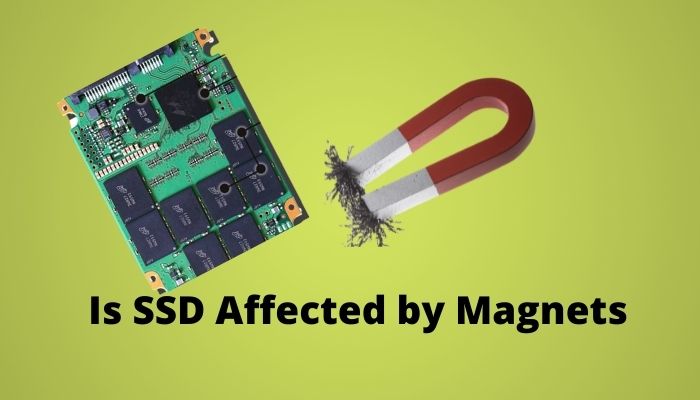
Do you want to know more about this issue? Just continue reading the rest as I explain this matter.
Why is SSD not Affected by Magnets?
SSDs are not affected by magnets cause there’s no magnetic responsiveness inside the drive.
They are built with a bunch of NAND chips which are also known as flash memory.
These NAND chips use electricity instead of Magnetic energy to store data. When there’s no connection to magnets then there can be no possible effect that can happen through magnets.
If you have still some questions left regarding this matter, continue reading next as I’ll be explaining most of it.
Go through our epic guide on Fix Motherboard Can’t Detect Hard Drive.
Can Magnets Affect SSD in Any Condition?
To get the answer to this question, you have to understand how SSD works. Its system of storing data is quite different from a traditional HDD.
People believe SSDs are made of platter disks with no moving parts, and for this reason they are more sensitive to certain environmental factors like magnetism like the HDDs we used to use in earlier days.
This belief is completely false for modern days drives. SSDs actually have physical memory modules no matter what type or size SSDs won’t be affected by magnets.
So, this means magnets can’t affect SSD in any way or in any condition.
Now you have got the confirmation about magnetic effects, the next question comes about other ways of SSDs being affected.
You can check this post, how Can RAM Overheat problem solved.
What can Damage SSD?
There are several reasons for an SSD failure. But, unlike the usual hard disk drives, which are made of breakable machine parts that could fail for the slightest shock, overheating or even moving from one place to another – SSDs are built with semiconductor chips that store data with non-volatile memory.
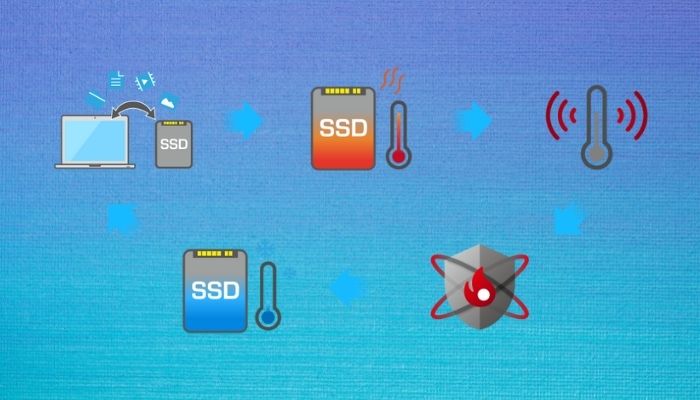
To simplify, being resistant to magnetic fields and lack of moveable components, SSD can eliminate a few possible causes of failures.
Here are some reasons why SSD fails:
- Natural effects: Natural effects like fire, flood, high temperature can be reasoned for an SSD failure.
- Physical damage: Another reason for an SSD failure is physical damage. Sometimes, bad solder joints can also create this issue.
- Damage from viruses: One of the most popular causes of SSD failure is a virus attack. It can enter in your system and hamper the regular data storing mechanism.
- Electric fluctuation: This is the most common reason why SSD fails. Abnormal shutdown of computers, power outages and short circuits can also be included in this matter.
- Corrupted data: Corrupted data can also violate your solid drive.It completely destroys your P/E system. Moreover, it fails your SSD.
- Firmware failure: SSDs firmware is surprisingly complicated and many SSD failure seems to happen for this. This problem only occurs outside of normal parameters. Apparently, when a serious firmware problem appears, SSDs fall into a fail-safe mode.
- Misuse: Thee most common form of misuse is using a drive prematurely because it wasn’t properly matched with the data center.
All in all, these were the main reasons for the damage and failure of an SSD
Check out the best motherboard for Ryzen 7 3700X.
Can SSD fail?
Yes, Every Solid State Drive (SSD) fails at a certain time. No matter which technology is used for an SSD, it will eventually fail after several times of reading and writing. It in a bit different way than the conventional HDD fails as they use different kinds of mechanisms.
However, On the technical issues, it fails in different ways than traditional HDD. SSDs use NAND flash memory. It can be referred to a non-volatile solid-state memory that maintains data even when the power source is removed.
When data is written to NAND programming, the data must be erased before putting new data into that exact cell. That means these memory cells can be used for a limited time before the cells get corrupted. This can be calculated by P/E cycles ( programmed and erased).
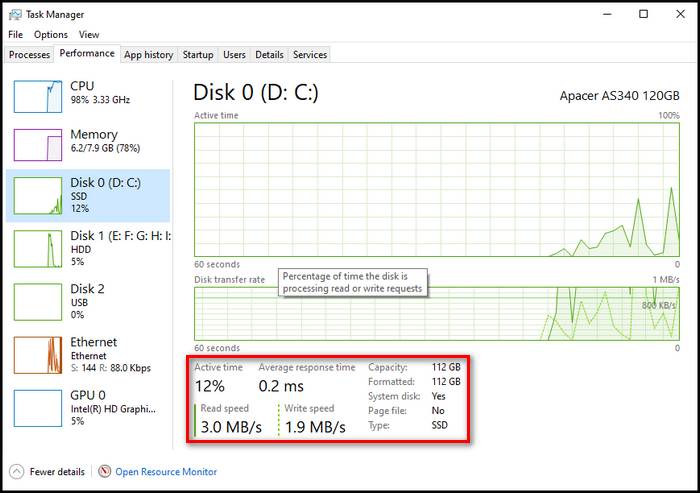
Another term that measures SSDs lifespan is TBW ( terabytes written ). It is the total amount of data that can be written before an SSD is likely to fail.
These technical terms measure how long you can enjoy the speed of an SSD Moreover, it measures the lifetime before an SSD can fail.
Apart from these reasons, there are some outer and inner causes for an SSD to stop working properly. Bare with me if you want to know.
SSD Failure Symptoms
Since you have understood the reason behind a faulty SSD, we can now move on to the next part. You know what can damage your SSD. But, you don’t know how to recognize them?
Don’t panic. In the next part, I’ll add some indications for you. If you notice the following symptoms, you can make a plan for your next drive and prepare to backup data.
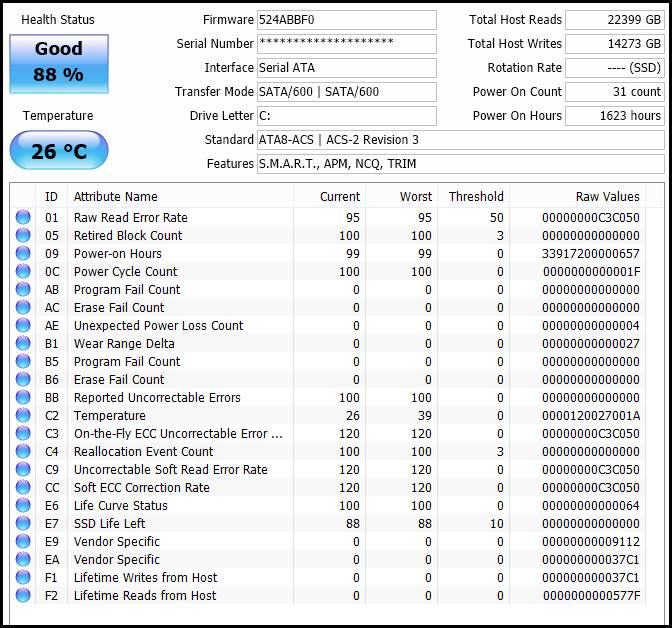
Here are the common signs of a failing SSD:
- Slow data transfer rate: If the file transfer operation of your computer is getting slower than usual, then you might consider it as an SSD failure. There are some other factors that can also create this issue like the failure of another hardware. However, if your computer’s performance starts to noticeably slow and the other symptoms start to show on, then it may be wise to start backing up your data.
- Corrupted data: If you can’t access into a particular file and can’t even delete that, there’s a strong possibility that your SSD is corrupted. This is a sign that your drive may be going to end soon.
- An increasing number of bad sectors: When a single subsection of a drive goes bad, it’s called a bad sector. That means that section is no longer responsive to read or write operations. It can be caused by a physical error or software errors. It can be a major sign of a failing SSD if these types of sectors increase. However, you can fix it through some software only if it’s a software issue.
- File system needs repair: Have you ever seen an error message saying “your pc needs to be repaired”? It is also a symptom of a filing SDD. Sometimes, it can appear because of not shutting down your computer properly. But, for most cases, it appears because of your SSD developing bad sectors.
- Frequent crashes during boot: PC crashing during boot displaying “ your PC ran into a problem and needs to restart. We’re just …”. generally, we restart several times if this message appears, and eventually, PC starts again. This is a sign from a dying drive. If this message keeps appearing in a regular break, then it’s time backing up your data. or transfer it. Re-installing the operating system might solve the problem for a while. But, in the long run, you are going to suffer.
- Your driver becomes Read-Only: It’s not a common sign, but there are a number of people who suffered from this. Your SSD might refuse to let you perform any actions that need it to write data on a disk. This situation can be explained as read-only mode. You can recover your data from the drive, but technically, your drive won’t perform any other actions.
These are the indications you’ll be getting if your SSD fails. Hopefully, you won’t face all of these at the same time. If you face more than one, try backing up your data or transferring it to some other drive. Before throwing out your driver, make sure you have checked the problems properly.
Conclusion
From this article, you have got to learn that the mechanisms of SSD and HDD are quite different and they were both built differently. Other than that, I have explained how an SSD fails and when to get alarmed for your SSD.
If you have read attentively, it should have cleared all of your doubts and myths regarding SSD failure. From now on, you don’t have to worry about SSDs before upgrading.
Feel free to comment if you have any doubts.

